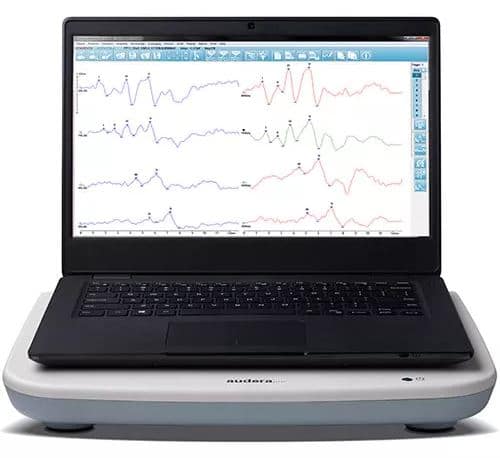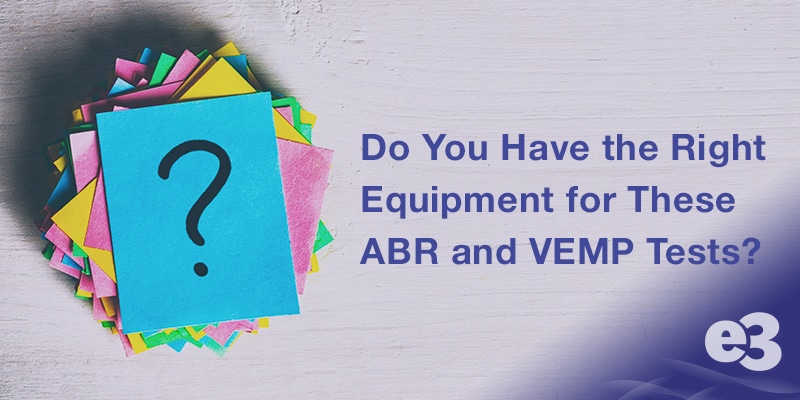by Adam Dawson
The American Academy of Audiology (AAA) and the American Speech-Language-Hearing Association (ASHA) recently published seven new CPT codes for Auditory Evoked Potentials (AEP) and Vestibular Evoked Myogenic Potentials (VEMP) tests.
These codes were approved by the American Medical Association (AMA) CPT Editorial Panel for implementation on January 1, 2021.
Out of the seven new codes, four are specifically for AEP testing and three are for VEMP testing. The purpose of these additions is to help better define and describe the work being performed.
The four new AEP CPT codes are:
- 92650 – Screening of AEP with broadband stimuli, automated analysis
- 92651 – for hearing status determination, broadband stimuli, with interpretation and report
- 92652 – for threshold estimation at multiple frequencies, with interpretation and report
- 92653 – neurodiagnostic, with interpretation and report
In addition, the groups developed three new codes to simplify reporting of VEMP testing.
The new VEMP CPT codes are:
- 92517 – VEMP testing, with interpretation and report; cervical (cVEMP)
- 92518 – ocular (oVEMP)
- 92519 – cervical (cVEMP) and ocular (oVEMP)
These Instruments Can Perform All These Tests
Interacoustics Eclipse

A future-proof, modular instrument capable of performing AEP, ASSR, VEMP, and OAE testing, the Interacoustics Eclipse packs a ton of power into a compact package. It has the largest number of clinically relevant features of any AEP device today and provides an unparalleled blend of parameter flexibility and user-friendliness.
Whatever your challenge may be, the Eclipse enables you to focus on the job at hand with the assistance of dedicated software modules for all facets of auditory evoked potentials. It is designed to fit seamlessly into your everyday workflow and to offer complete reliability and perfect results. Additionally, the oVEMP and cVEMP tests measure and analyze the vestibular evoked myogenic potential generated by a loud stimulus.
ABR Features:
- AMLR, ALLR & P300/MMN testing
- Threshold & neurological ABR testing & eABR
- ECochG Area Ratio Calculation
- CM & ECochG testing
- FMP and residual noise calculations
- SNR 3:1 ratio calculator
- CR, RA, INC waveform markers
- Research module
- Bayesian weighting
- 2nd generation ASSR option (employing the NB Chirp Stimuli and a dual-detection algorithm)
- ASSR testing at 8 frequencies simultaneously (97% accuracy to behavioral responses)
VEMP Features:
- FDA-approved VEMP includes R/L normalization and raw output recording
- Instant visual feedback – increased quality
- EMG-based scaling – a reliable result
- Stimulate up to 100dB nHL with clicks and 110dB nHL with 250Hz-4kHz tonebursts
- The B81 bone conductor can go up to 75dB nHL with 250Hz-4kHz tonebursts
- Research module option
Want more information? Click here to learn more about the Eclipse.
GSI Audera Pro
 Compact and powerful, the new GSI Audera Pro is a compact, yet versatile device, capable of performing all standard evoked potential tests. Some of the featured new tests include: P300/MMN, ASSR Binaural testing, TEOAE, and Speech Stimuli for ABR. In comparison to its predecessor, the hardware has been updated to provide a smaller footprint, an integrated pre-amplifier, lightweight cables, and the GSI OAE probe.
Compact and powerful, the new GSI Audera Pro is a compact, yet versatile device, capable of performing all standard evoked potential tests. Some of the featured new tests include: P300/MMN, ASSR Binaural testing, TEOAE, and Speech Stimuli for ABR. In comparison to its predecessor, the hardware has been updated to provide a smaller footprint, an integrated pre-amplifier, lightweight cables, and the GSI OAE probe.
The Audera Pro includes waveform analysis tools such as Area Ratio for ECochG, application of digital filters, the option to split alternating waveform into rarefaction and condensation components, cross correlation of waveforms, and automatic SNR and RN calculation. It comprehensively evaluates, identifies, documents, and diagnoses auditory and vestibular disorders on patients of all ages.
Additionally, it allows you to combined reports between modules (i.e. ABR, ASSR, OAE, VEMP etc.).
ABR Features
- Binaural testing
- Save time and increase clinical confidence with CE-Chirp stimuli
- eABR, ECochG, ABR, MLR, LLR, and SN10
- P300 and MMN protocols
- Traditional test stimuli of click and tone bursts
- Bayesian weighting
- Split alternating wave form into rarefaction and condensation components
- Cross correlation of waveforms
- Automatic SNR and RN calculation
VEMP Features
- Analyze cervical and optical VEMP recording
- Automatically calculates asymmetry ratio
- Saving automatically creates report in EP module
- Rectification of cVEMP waveforms
- Allows for viewing each sweep in recording
- Allows for excluding sweeps from the grand average when EMG activity is greater or less than 1, 1.5, or 2 SD’s
Want more information? Click here to learn more about the Audera Pro.
Meeting Your Clinic’s Needs
If you would like to learn more about these products or schedule an on-site demonstration, request a consultation today!
About the author
 Adam Dawson is the Digital Marketing Coordinator at e3 Diagnostics. His interest in hearing healthcare is driven by his passion for music because he feels everyone should be able to clearly listen to Pet Sounds at least once in their life. In his free time, he enjoys playing video games, digging through record stores for classic vinyl, shooting hoops, and writing stories.
Adam Dawson is the Digital Marketing Coordinator at e3 Diagnostics. His interest in hearing healthcare is driven by his passion for music because he feels everyone should be able to clearly listen to Pet Sounds at least once in their life. In his free time, he enjoys playing video games, digging through record stores for classic vinyl, shooting hoops, and writing stories.






